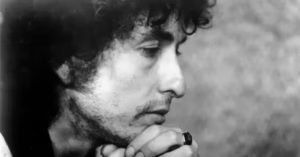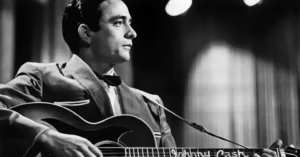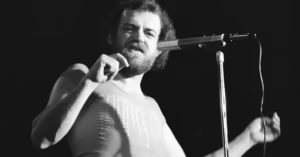Chris Rea: The Road to the Blues
Chris Rea. Early Life and Background
Christopher Anton Rea was born on March 4, 1951, in Middlesbrough, North Yorkshire, England, into an Italian-Irish family. His father, Camillo Rea, owned an ice cream business, while his mother, Winifred, came from an Irish background. Despite growing up in a bustling family of seven children, Rea did not initially pursue music. In fact, he picked up the guitar relatively late, around the age of 21, inspired by slide guitar legends like Ry Cooder and Joe Walsh.
Though he studied journalism and worked in his father’s business, Rea’s passion for music led him to start writing songs and performing with local bands. It was a chance opportunity to replace David Coverdale in the Middlesbrough-based band Magdalene (later known as The Beautiful Losers) that ignited his career. From these humble beginnings, Rea evolved into one of the UK’s most distinctive and enduring voices in blues rock and soft rock.
Chris Rea. Breakthrough and Early Success: Late 1970s to 1980s
Rea’s big break came in 1978 with the release of his debut solo album Whatever Happened to Benny Santini? The record’s title referenced the stage name his record label had suggested, which Rea rejected. The album featured the hit single “Fool (If You Think It’s Over)”, which became a Top 20 hit in the US and earned him a Grammy nomination for Best New Artist. Though it did not chart as high in the UK initially, the song helped establish his transatlantic reputation.
The late 1970s and early 1980s saw Rea experimenting with various styles, blending pop rock with hints of blues and jazz. Albums like Deltics (1979), Tennis (1980), and Chris Rea (1982) laid the groundwork for a more consistent sound that he would refine in the mid-1980s. These early years were marked by solid but modest commercial success.
Commercial Peak: The Mid-to-Late 1980s
Chris Rea’s career truly soared with the release of Shamrock Diaries (1985), a deeply personal album that included the standout track “Stainsby Girls”, written about his wife. The album marked the beginning of a golden era for Rea, with a sound that combined soulful vocals, melancholic lyrics, and smooth guitar work.
His next albums, On the Beach (1986) and Dancing with Strangers (1987), were critical and commercial successes, with the latter reaching No. 2 on the UK Albums Chart. Songs like “On the Beach”, “Josephine”, and “Let’s Dance” became anthems of a new kind of sophisticated soft rock — emotional, mature, and melodically rich.

Perhaps his most celebrated album, The Road to Hell (1989), solidified his reputation as a master storyteller. The title track “The Road to Hell (Part 2)” became one of his signature songs, and the album reached No. 1 in the UK. The lyrics, inspired by a traffic jam on the M25 motorway, cleverly reflected social commentary, personal reflection, and existential angst.
Reinvention and Artistic Freedom: The 1990s
In the early 1990s, Rea continued his success with Auberge (1991), another No. 1 UK album, known for the song “Auberge”, which celebrated freedom and escapism, metaphorically represented by a vintage Caterham 7 sports car (featured on the album cover). Albums like God’s Great Banana Skin (1992) and Espresso Logic (1993) further expanded his bluesy, introspective style.
Despite his fame, Rea remained reluctant about stardom. He often criticized the music industry’s commercialism and stayed away from the limelight. His focus remained on songwriting, guitar-playing, and building a loyal fanbase rather than chasing trends.
Chris Rea. Health Battles and Return to the Blues
In the late 1990s, Chris Rea’s life took a dramatic turn. After being diagnosed with pancreatic cancer in 2000 and undergoing a life-saving operation, he was left with serious health issues. The experience prompted a deep reevaluation of his career and artistic direction.
Rea made a decision to return to his roots — the blues. He founded his own label, Jazzee Blue, and embarked on a new phase of his career defined by artistic independence. He released the ambitious Dancing Down the Stony Road (2002), an authentic blues album that was both a commercial and artistic success. This was followed by Blue Street (Five Guitars) (2003), Hofner Blue Notes (2003), and other blues-based projects that focused on instrumental work, roots music, and personal exploration.
In 2005, Rea released Blue Guitars, a monumental 11-CD box set featuring 137 tracks that traced the evolution of blues from its African origins to modern times. Each disc represented a different style or era, accompanied by a book with Rea’s own paintings. It remains one of the most ambitious and personal projects in his discography.
Chris Rea. Later Years and Continued Passion
Despite his ongoing health challenges, Rea continued to tour and release music into the 2010s. Albums like The Return of the Fabulous Hofner Bluenotes (2008) and Santo Spirito Blues (2011) continued his passion for storytelling through blues.
In 2017, he released Road Songs for Lovers, his first mainstream-oriented album in many years, which received favorable reviews. However, during the promotional tour, he collapsed on stage due to a stroke he had suffered earlier. Since then, Rea has largely stayed out of the public eye, but his influence remains deeply felt.
Chris Rea. Musical Style and Legacy
Chris Rea’s music defies easy classification. While often grouped with soft rock and adult contemporary artists, his soul belongs to the blues. His warm, gravelly voice, expressive slide guitar playing, and introspective songwriting are the hallmarks of his work. Influenced by blues, jazz, and Mediterranean music, Rea developed a unique sound that is instantly recognizable.
Unlike many of his contemporaries, Rea rarely chased chart success. His music focuses on mood, atmosphere, and emotional depth rather than flashy production. He is especially revered in mainland Europe, where his blues-oriented albums have long been appreciated.
Complete Discography (Selected Highlights)
- Whatever Happened to Benny Santini? (1978)
- Deltics (1979)
- Chris Rea (1982)
- Shamrock Diaries (1985)
- On the Beach (1986)
- Dancing with Strangers (1987)
- The Road to Hell (1989)
- Auberge (1991)
- Espresso Logic (1993)
- La Passione (1996, soundtrack)
- Dancing Down the Stony Road (2002)
- Blue Guitars (2005, box set)
- The Return of the Fabulous Hofner Bluenotes (2008)
- Santo Spirito Blues (2011)
- Road Songs for Lovers (2017)
Interesting Facts
- Chris Rea designed many of his own album covers and has exhibited his paintings publicly.
- He is an accomplished slide guitarist despite being self-taught and starting late.
- “Fool (If You Think It’s Over)” was covered by Elkie Brooks and became a hit again in the 1980s.
- After his health crisis, Rea turned down offers to return to mainstream music, choosing to focus solely on blues.
- He is highly popular in Germany, the Netherlands, and other parts of Europe, where his blues albums have cult status.
Final Thoughts
Chris Rea’s journey is one of resilience, transformation, and artistic integrity. From chart-topping soft rock ballads to deeply personal blues projects, Rea has carved out a unique path in music. Though his name might not always appear in mainstream discussions, his contribution to British and European music is both significant and lasting. His work speaks to those who understand the power of quiet reflection, emotional honesty, and the healing power of the blues.




